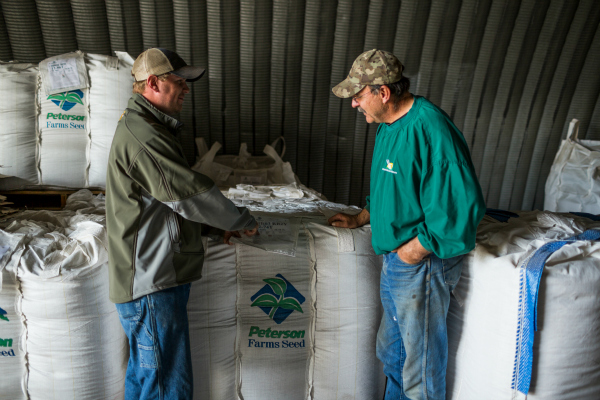Three Tips for Making Confident Seed Decisions

Purchasing seed is one of the biggest and most difficult of your input cost decisions. How can you make that decision easier and more beneficial for your farm?
You can make a more confident decision by working with a trusted advisor who really knows his stuff. That person may be your seed dealer, seed company rep, crop consultant – or all three. You know your fields better than anyone else does, and your trusted advisor should know the products and how they best fit on your farm. Work together to create a successful plan for next year.
When making your 2016 product plan:
1. Rely on experiences from your own farm. Many of the past year’s hybrids and varieties will be available in 2016. If they performed well, place them on similar ground. However, don’t let one year dictate your decision about a specific product. You may have selected the right hybrid or variety for your farm, but had environmental factors work against you, producing atypical results. Product placement may have been incorrect, but you may have learned where it will perform better. Knowing the seed’s strengths and using them to your advantage can eliminate product placement issues.
2. Be certain that agronomic characteristics are your first consideration when selecting products. In other words, choose the genetics that will meet your farm’s unique needs. Think about the issues and challenges of specific fields individually. If you have variable soils, select seed that can handle varying conditions. Challenges such as IDC, water, soil type, and planting practices can be managed by product selection.
Other yield robbers can also be addressed through the genetics you select. Drainage, SCN, resistant weeds, root disease, salt, insects, and IDC are just a few of the nuisances that negatively affect yield. Varieties with new genetics are able to target some of these. Most high-yielding selections also carry the best agronomic traits.
3. Consider the timing of agronomic issues in individual fields. Water can be heavy or limiting at any time during the growing season. Disease can set in throughout the season. It’s important to plant a mix of varieties and hybrids to help manage pests. Planting a portfolio of products, rather than a single selection across your farm minimizes your risk and allows the best performer to counteract the poorer performer. Keep in mind that the highest yielding hybrid or variety will not fit every field on your farm.
There are more choices and variations in the seed industry now than ever before. Take your time to evaluate the options and work with someone who knows both your farm and product genetics. Select the right genetics for your farm first. And then protect those genetics with the proper trait for your farm.



